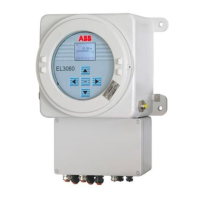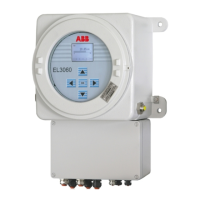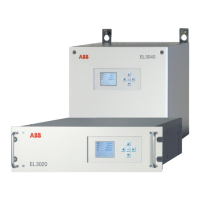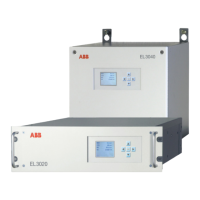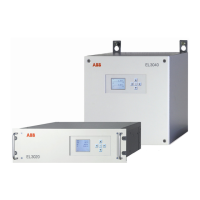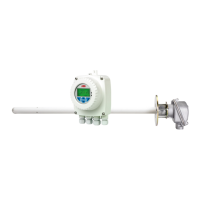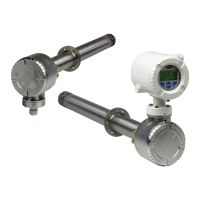EL3060 CONTINUOUS GAS ANALYZERS | OI/EL3060-EN REV. A 77
Caldos27: Notes on calibration
Calibration methods
Automatic calibration: Single-point calibration
Manual calibration: Zero-point/end-point calibration (set ex works) or
single-point calibration
Single-point calibration
Owing to the operating principle of the sensor in the Caldos27 analyzer, the
zero point and end point do not drift independently of each other. The rou-
tine calibration of the Caldos27 can therefore be carried out as a so-called
single-point calibration with standard gas. Measurements which are relevant
to safety are excluded from this process. The zero point and end point must
be checked regularly with test gases depending on the measuring task
(Recommendation: once a year).
Standard gas
The component "Standard gas" is always the last of the maximum of five
sample components (see page 91) in the Caldos27 to be configured. The
single-point calibration with standard gas has an effect on all the other
sample components configured in the Caldos27.
N
2
with the measured value 10,000 rTC is set ex works as the standard gas. If
another standard gas is used for the manual calibration, its rTC set point
must be input during the calibration.
Standard gas rTC set point
N
2
10,000 rTC
Air 10,070 rTC
Ar 7,200 rTC
CO
2
7,500 rTC
CH
4
14,000 rTC
He 50,000 rTC
H
2
60,000 rTC
Zero and end points of the sample components configured in the Caldos27
must be checked and re-calibrated if necessary after the standard gas has
been changed.
Associated gas effect
The measurement technique of the Caldos27 analyzer is based on the differ-
ing thermal conductivity of the various gases. Since this measurement tech-
nique is nonselective, the concentration of a sample component can only be
measured exactly in a binary or quasi-binary gas mixture. If additional asso-
ciated gas components are present in the sample gas, their influence must
be considered in the ex-works initial calibration.

